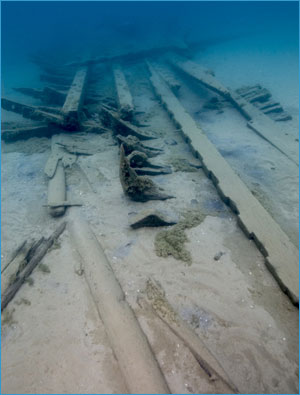 | |||||||||||||||||||
|
|
|
|
|

Archaeologists
|
|||||||||||||||
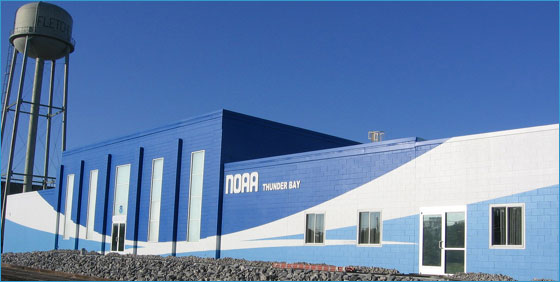 |
|
The Great Lakes Maritime Heritage Center in Alpena, Mich. (Photo: NOAA) |
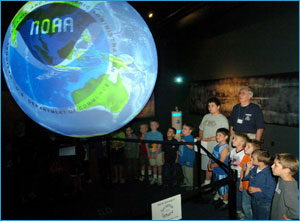 |
|
Science on a Sphere on display at the Great Lakes Maritime Heritage Center. (Photo: Amy Lisenbe, The Alpena News) |
Science on a Sphere Awes Visitors
In February 2006, the program received $100,000 from NOAA’s Office of Education to install Science on a Sphere at the Great Lakes Maritime Heritage Center. Science on a Sphere uses four projectors to cast rotating images, or data sets, onto a six-foot-diameter sphere to create the effect of the Earth spinning in space. The sphere has awed thousands of visitors, connecting them to NOAA’s global research. In the future, programming will be developed for Science on a Sphere that focuses on the Great Lakes and maritime heritage.
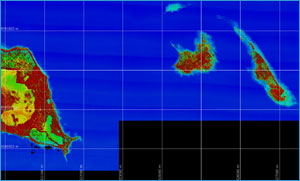 |
|
In 2006, the sanctuary used a remote sensing system that uses light pulses from an air-craft to illuminate the terrain below, to update existing shoreline information and to locate and document maritime heritage resources in shallow areas of the sanctuary. (Photo: NOAA) |
Shallow Waters of Thunder Bay Studied
Researchers used remote sensing technology in shallow waters to further characterize areas of the sanctuary. The data collected will be used to update existing information, and to locate and document maritime heritage resources in the targeted areas. This information, when combined with a powerful geographic information system application now under development, will allow researchers and resource managers to effectively manage the resources, and to interpret and share the knowledge with the public.
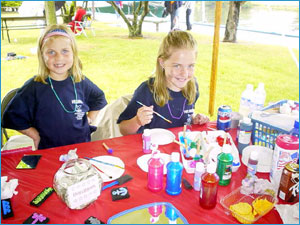 |
|
Face painting is one of many children activities offered at the annual Thunder Bay Maritime Festival. (Photo: Richard Albin) |
Maritime Festival Brings History of Region to Life
The Great Lakes once governed community life in northeastern Michigan coastal towns and villages. In order to reconnect with this living heritage, sanctuary staff hosts the Thunder Bay Maritime Festival each year. The 6th Annual Thunder Bay Maritime Festival in 2006 brought nearly 10,000 visitors to participate in family boat-building, maritime entertainment, kids’ activities, educational workshops, diving and ROV demonstrations, and tours of the new Great Lakes Maritime Heritage Center. Sanctuary staff will continue to host the festival to share with children and adults the maritime history that makes Thunder Bay a national treasure.
Thunder Bay Receives Funding to Preserve Historic Photos
NOAA awarded $25,000 to digitize a collection of negatives recently loaned to them by the University of Wisconsin-Superior’s Ken Thro Collection for use in the Thunder Bay Sanctuary Research Collection. The negatives largely depict 20th century Great Lakes watercraft and will greatly enhance the scope of the collection which presently focuses on 19th century watercraft. This funding compliments a $235,000 grant now being used by the sanctuary and Alpena County Library to digitize the collection’s 65,000 historic photographs. Digitization will accelerate the pace of historic research, foster greater public access to the collection, and aid in the preservation of fragile documents by reducing the need for physical handling.
Plans for 2007
- Exhibits for the 9,000-square-foot exhibit area at the Great Lakes Maritime Heritage Center are expected to be completed in late 2007. Titled Exploring the Shipwreck Century, the exhibits will help visitors appreciate the role of the Great Lakes in American history, and will foster public awareness and appreciation for Great Lakes’ shipwrecks.
- Construction is underway on the Great Lakes Maritime Heritage Trail behind the Great Lakes Maritime Heritage Center, which will feature dockage for visiting tall ships, a boardwalk, a pedestrian bridge, acres of new landscaping, historically themed lighting, and 12 interpretive panels.
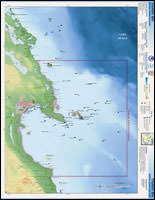 |
|
Click here for a larger map. |
Sanctuary Atlas Maps
New sanctuary atlas maps depicting physical ocean and land features, other state and federal managed areas and parks, and other basic atlas features are now available on the sanctuary program Web site.
Click here to view print version. (pdf, 552K)
|
|



